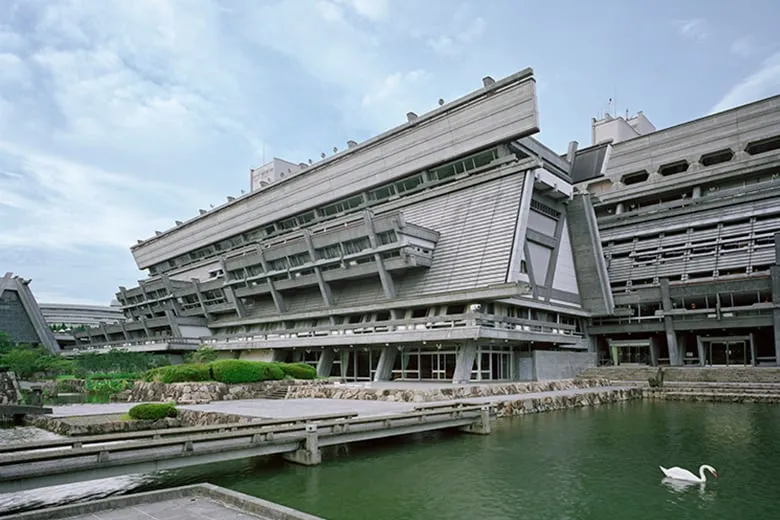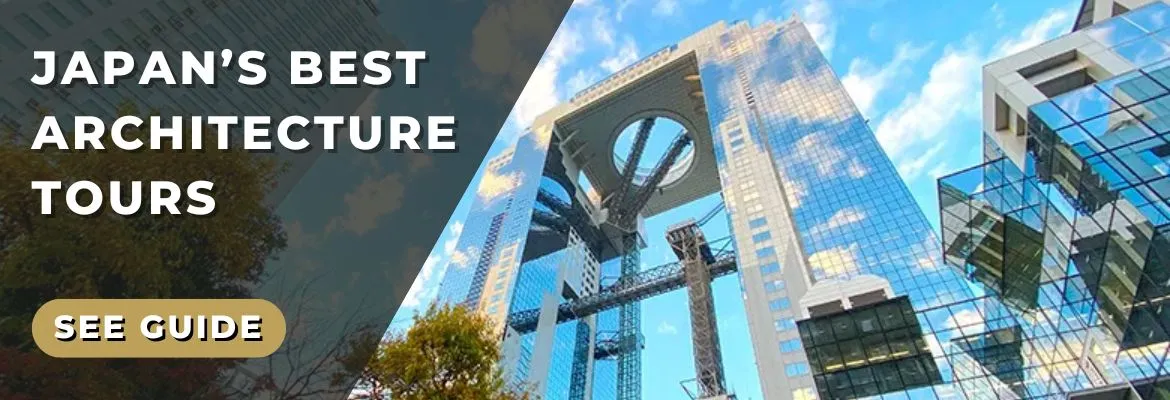Whether you’re fascinated by the influence of traditional craftsmanship or modern innovation in Japan’s architectural landscape, here I reveal how to experience Japan’s most significant buildings with exclusive behind-the-scenes access that you simply can’t get elsewhere.
- Japan Architecture Tours: An Insider's Review of 7 Premium Experiences
- From Nintendo's Former HQ to Secret Art Collections: My Personal Favourites
- Expert Access: Why These Tours Offer Something Special
- Architecture Beyond the Obvious: Other Gems Worth Seeking
- Recent Guides & Resources You Might Find Useful:
- Recent Podcasts:
- Leave A Comment / Ask A Question
Japan Architecture Tours: An Insider’s Review of 7 Premium Experiences
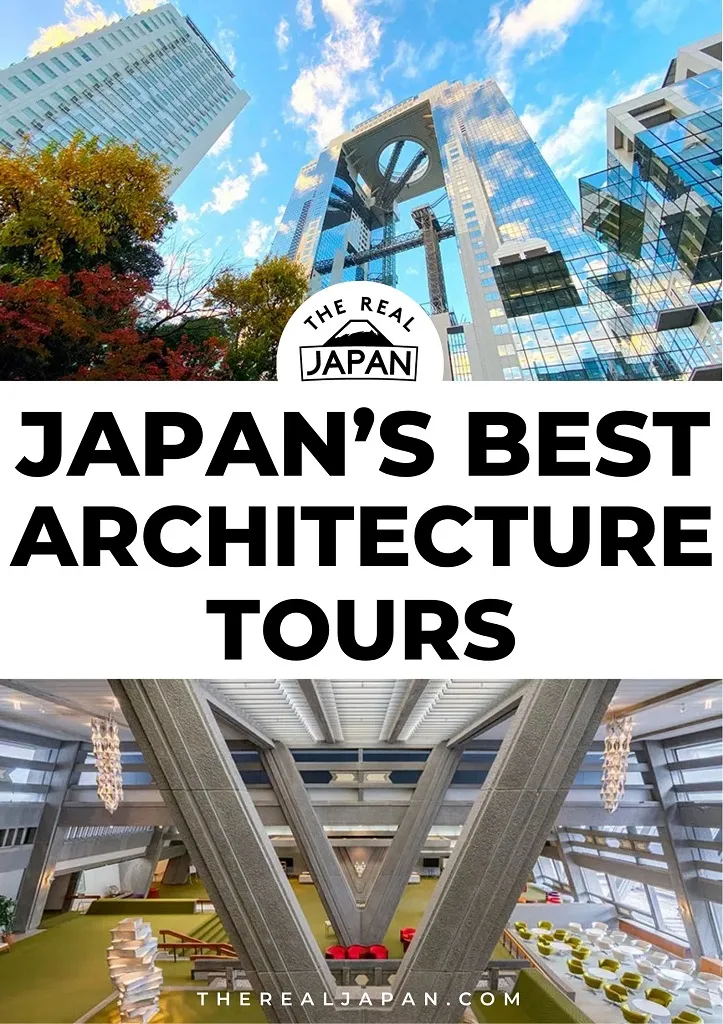
Japan’s architectural story is extraordinary—spanning centuries from ancient temples to futuristic towers. But experiencing the best of it requires more than just walking past famous buildings.
In my comprehensive new guide, I feature seven premium architecture tours offered by Wabunka, having personally taken three of them myself.
These aren’t typical tourist experiences—they’re specialist tours led by genuine experts, often providing access to spaces that are normally off-limits to the public.
Here’s what makes 3 of these tours special:
Nintendo’s Former HQ (Kyoto) – ¥25,000/$169 | 90 minutes
Gaming history meets architectural genius in this stunning fusion of Art Deco and Tadao Ando’s signature concrete modernism. My wife and I were blown away by the exclusive access to Nintendo memorabilia and the library inspired by the film Interstellar.
International Conference Centre Kyoto – ¥22,000/$149 | 90 minutes
Rare VIP access to a modernist masterpiece by Sachio Otani (protégé of Kenzo Tange). We explored exclusive rooms usually reserved for Japanese royalty and international heads of state—plus that incredible rooftop terrace with stunning views.
Umeda Sky Building (Osaka) – ¥26,000/$176 | 60 minutes
Behind-the-scenes access to architect Hiroshi Hara’s original sketches and world-class art by Picasso and Le Corbusier in non-public areas. Walking the skybridge 87 meters above ground was definitely a highlight.
These experiences exist because of carefully cultivated relationships between Wabunka and Japan’s most respected cultural institutions. The exclusive access won’t stay available forever as tourism pressures increase.
From Nintendo’s Former HQ to Secret Art Collections: My Personal Favourites
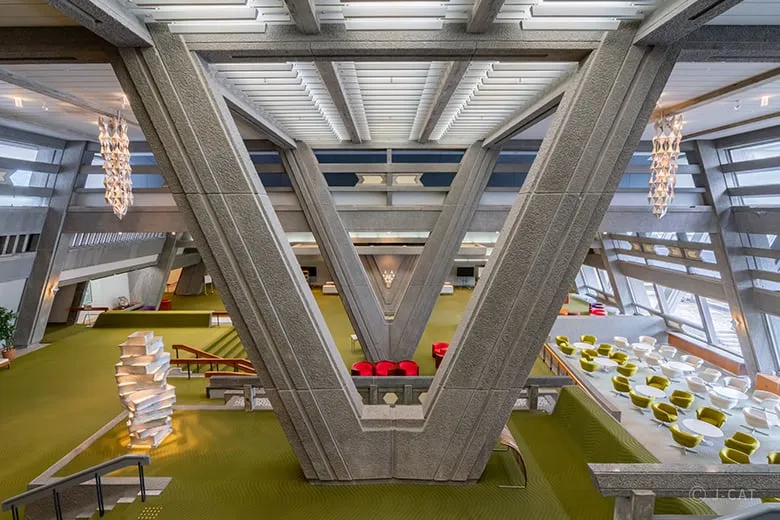
Having experienced three of these tours personally, I can tell you they’re genuinely transformative experiences that reveal Japan’s architectural secrets in ways you’d never discover on your own.
My Top Pick: ICC Kyoto
The International Conference Centre Kyoto (pictured above) tour provides the most exclusive access. Built in 1966, this striking building features dramatic geometric shapes inspired by surrounding nature. The VIP room decorated with Taro Okamoto artwork and the rooftop access make this unmissable for architecture purists.
Most Unique: Nintendo’s Former HQ
The combination of Art Deco architecture, Tadao Ando’s concrete modernism, and Nintendo’s gaming heritage creates something truly one-of-a-kind. Seeing vintage Nintendo warehouse boxes repurposed as art while exploring Ando’s signature green apple paintings was magical.
Best Value for Art Lovers: Umeda Sky Building
Despite being the shortest tour, the rare access to works by legendary artists like Picasso and Le Corbusier in normally restricted areas makes this special. The original architect sketches and suspended skybridge experience add to the appeal.
Pro Tip: Book well in advance. These tours have very limited availability due to their exclusive nature and small group sizes. Some locations like ICC Kyoto only offer tours on a handful of days each year.
Expert Access: Why These Tours Offer Something Special
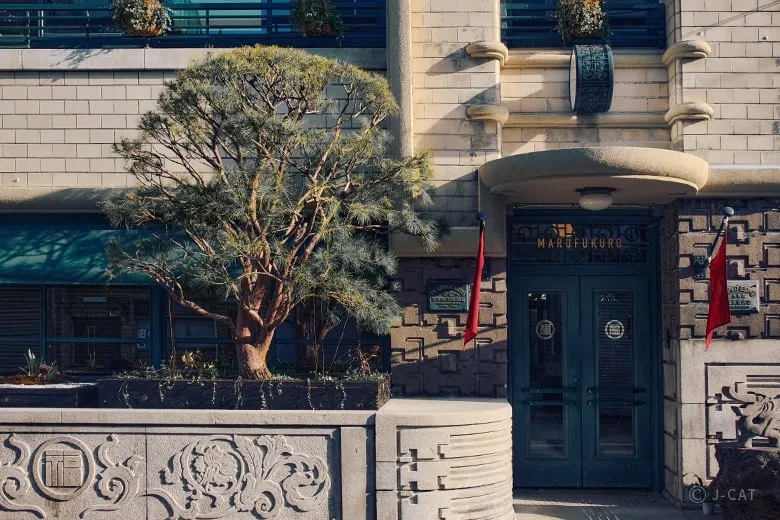
Genuine Experts as Guides
Your guides aren’t just tour leaders—they’re architecture professionals, curators, and monks with deep expertise. Architecture curator Shuko Koike, who leads the Tokyo tours, holds a Masters in Architecture and worked internationally before returning to share Tokyo’s hidden stories.
Normally Restricted Areas
Many tours include access to spaces that are completely off-limits to regular visitors. The ICC Kyoto VIP room, Former Nintendo HQ’s (pictured above) exclusive library, and Toji Temple’s pagoda interior are just a few examples.
Cultural Context That Matters
These tours explain not just what you’re seeing, but why it matters. Understanding how Sachio Otani’s ICC Kyoto design takes cues from surrounding nature, or how Tadao Ando preserved Nintendo’s hanafuda card heritage while adding modernist elements, really elevates each experience.
Photography and Cultural Sensitivity
Many locations have strict photography rules, especially inside temples and private buildings. Your expert guides clearly explain what’s permitted and help you approach sacred and restricted spaces appropriately.
The window for experiencing Japan’s architectural heritage at this intimate level won’t stay open forever. Tourism pressures are already causing some venues to restrict access.
Architecture Beyond the Obvious: Other Gems Worth Seeking
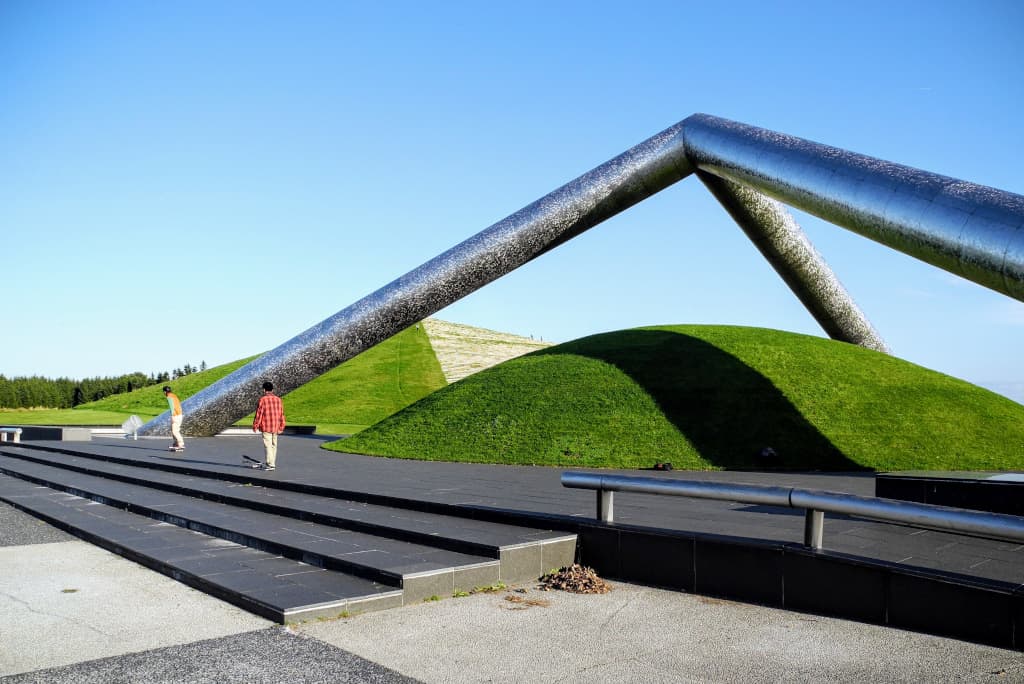
While these premium tours offer incredible experiences, Japan’s architectural treasures extend far beyond what any single company can offer. Here are some of my other architectural highlights I think worth adding to your itinerary:
Culturally Significant Ryokan in Rural Amami
Less than 45 minutes by train from the buzzing centre of Osaka is the restful haven of Nanten-en ryokan in Amami. With its culturally significant architecture and enveloped in a beautifully-designed garden, this is a fine example of a traditional Japanese inn.
SEE: Nanten-en Ryokan: A Peaceful Haven In Rural Amami, Osaka (Review)
Kyoto Station’s Dramatic Interior
Often overlooked by rushing travellers, this 15-story station features sweeping glass atriums and dramatic escalator systems that create an almost cathedral-like experience.
SEE: Why You Should Explore Kyoto Train Station’s Dramatic Architecture
Osaka’s Night Architecture Walk
The route from Fukushima Ward to Osaka Station reveals incredible modern buildings that look completely different after dark, with sophisticated lighting designs transforming the urban landscape.
SEE: Discovering Osaka Architecture: Night Walk From Fukushima Ward to Osaka Station
Moerenuma Park, Sapporo
This sculptural playground (pictured above) combines landscape architecture with art installations, creating spaces that redefine how parks can function as architectural experiences.
SEE: Moerenuma Park: Discover Sapporo’s Incredible Sculptural Playground
These discoveries remind us that Japan’s architectural story isn’t confined to famous landmarks—it’s woven into the fabric of daily life, waiting to be noticed by curious travellers.
Recent Guides & Resources You Might Find Useful:
- Universal Studios Japan Without The Express Pass: The Complete Money-Saving Guide
- Flying to Japan? Here’s How To Fly Smarter
- Japan’s Best Airports Designed for Hassle Free Travel
Recent Podcasts:
- 9 Best Budget Hotels in Tokyo – Affordable Comfort in Prime Locations
- Universal Studios Japan Without The Express Pass: The Complete Money-Saving Guide
- Ainu – Japan’s Forgotten Indigenous People
- The Secret to Flying Around Japan for Less Than a Train Ticket

